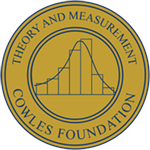Document Type
Discussion Paper
Publication Date
1-1-1990
CFDP Number
934
CFDP Pages
19
Abstract
Kaldor’s capital/labor income distribution theory relied on differential saving propensities from profits and wages. Robinson’s growth models typically specified constant-coefficient technologies in which marginal productivities cannot determine distribution. Here these two insights are combined in a two-sector (capital goods, consumption goods) economy. Two technologies are available, but only as either-or alternatives. The choice of technology and the income distribution depend on the saving propensities. Steady-state consumption need not be greater when the economy is more capitalized and profit rates are lower.
Recommended Citation
Tobin, James, "Growth and Distribution: A Neoclassical Kaldor-Robinson Exercise" (1990). Cowles Foundation Discussion Papers. 1177.
https://elischolar.library.yale.edu/cowles-discussion-paper-series/1177


